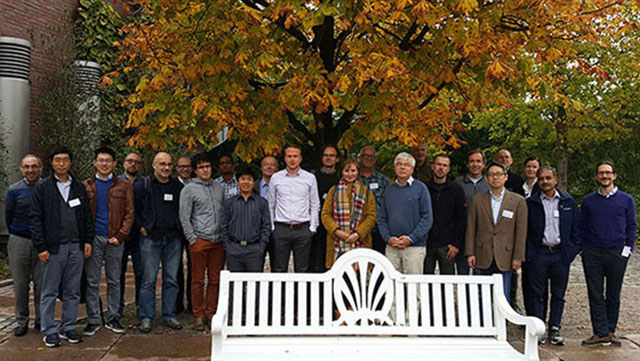What drives climate models
18 October 2018, by Ute Kreis

Photo: UHH/CEN/A. Allner
How can climate simulations and forecasts be further refined in the future? One key lies in the combination of observations and climate computer models. “Climate observations aren’t only analyzed to gain new insights,” explains CEN Director Prof. Detlef Stammer. “They also help to improve models and forecasts. To do so, the latter are formally combined with the observations in a process called data assimilation. In this way, forecasts can be made and individual parameters can be estimated that bring the models even closer to the reality.”
For exactly this purpose, last week researchers from Germany, Europe and the USA gathered in Hamburg for the workshop “Climate Data Assimilation.” Their specialty: adapting weather and climate forecasting models to real weather and climate observations, so as to arrive at the most precise forecasts possible. These specialists were invited by the CEN and CliSAP, Universität Hamburg’s Cluster of Excellence for climate research.
A new aspect at the workshop: the method employed for coupled models in order to refine climate forecasts. “The current trend is toward adopting coupled techniques, so as to optimize climate models and complete Earth system models alike – in contrast to weather models, which generally only take the atmosphere into consideration,” says Detlef Stammer. Many data assimilation techniques were originally designed in the area of weather forecasting, and subsequently adapted – for example, for marine research. New approaches have to be developed and tested in order to transfer these techniques to substantially longer climate timescales.
"Today, our fellow researchers from all over the world are exploring these questions, be it at the ECMWF in Reading (European Centre for Medium-Range Weather Forecasts, UK) or the NCAR in Boulder (National Center for Atmospheric Research, USA). With so many of us working on the same problem, it’s all the more important to compare notes and to establish international standards.”


